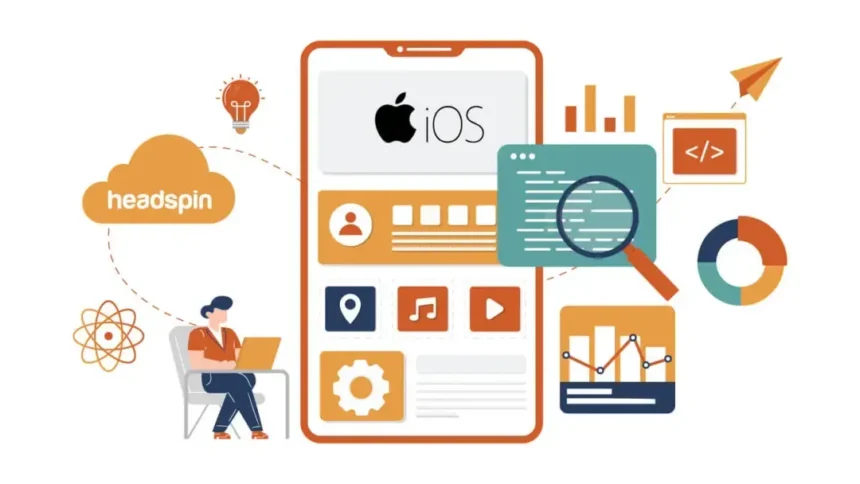The industry has seen many changes in recent years, and one of the most significant is the democratization of app testing. This term refers to the way modern codeless platforms have made testing more accessible to people without technical backgrounds. In the past, testing required specialized skills in coding and deep technical knowledge.
Now, with codeless platforms, almost anyone on a development team can automate iOS app testing. This shift has opened up new opportunities for teams to collaborate more effectively and produce higher-quality software. This blog will explore how modern codeless platforms are democratizing app testing.
Understanding Codeless Testing Platforms
Codeless testing platforms are tools that allow users to create, run, and manage automated tests without needing to write code. These platforms typically provide an easy-to-use interface, where users can drag and drop elements, record actions, or use pre-built templates to design tests. This approach removes the barrier of needing coding knowledge, making testing more accessible to a broader range of people.
These platforms come with various features that simplify the testing process. For example, they may include visual editors, real-time feedback, and integration with other development tools. Codeless platforms allow teams to test more frequently and efficiently by simplifying the process to automate iOS app testing. This ability is crucial in today’s fast-paced software development environment, where quick feedback and rapid iteration are key.
Who Benefits from the Democratization of Testing?
The democratization of app testing benefits many people, both within development teams and beyond. On development teams, non-technical members such as product managers, designers, and business analysts can now participate in testing.
These team members bring valuable perspectives on mobile app testing tool to the table. They understand the user experience and business requirements deeply, which allows them to create tests that align closely with the end-users’ needs.
Outside of development teams, the democratization of testing also benefits companies as a whole. With codeless platforms, companies can reduce the time and cost associated with training employees to write code for testing.
This reduction allows teams to focus resources on other important areas, such as feature development and user experience improvements. Ultimately, the entire organization benefits from faster, more efficient testing processes that lead to quicker releases and better products.
Increasing Collaboration and Communication
Codeless testing platforms promote better collaboration and communication within teams. In traditional testing environments, developers and testers often work in separate silos. Developers write the code, and testers—often a different group—focus on finding bugs. This separation can lead to communication gaps, misunderstandings, and delays in addressing issues.
With codeless platforms, the lines between these roles blur. Everyone on the team can contribute to testing, whether by creating tests, reviewing results, or providing feedback. This collaborative environment encourages more frequent communication and fosters a stronger sense of teamwork. Team members work together more closely, which leads to faster identification and resolution of issues.
Enhancing Speed and Agility in Development
Modern codeless platforms enhance the speed and agility of software development. Traditional testing methods, which rely heavily on manual testing and code-based automation, can be time-consuming and slow down the development process. Creating and maintaining tests in these environments requires significant effort, and any changes to the codebase can lead to broken tests that need fixing.
Codeless platforms streamline this process by allowing users to create and update tests quickly. When changes occur, tests can be updated easily through the platform’s interface without the need for complex coding adjustments. This flexibility allows teams to adapt to changes in the codebase or requirements more rapidly, keeping development moving forward without unnecessary delays.
Lowering the Barrier to Entry
Codeless testing platforms lower the barrier to entry for testing, making it more accessible to people who may not have a traditional technical background. This inclusivity is important because it allows teams to tap into a broader talent pool and leverage diverse perspectives in the testing process.
For example, a business analyst who understands the user’s needs and expectations can use a codeless platform to create tests that validate the user experience. Similarly, a designer can set up tests to ensure that the interface functions as intended. These contributions from non-technical team members add valuable insights that might be missed if testing were left solely to developers.
This lowering of the barrier to entry also encourages more team members to get involved in testing early in the development process. When testing is easy and accessible, it becomes an integral part of the workflow rather than an afterthought. Early testing with a mobile app testing tool helps catch issues sooner, leading to fewer bugs and better overall product quality.
Overcoming Challenges with Codeless Testing
While codeless testing platforms offer many benefits, they also come with challenges that teams need to address. One common challenge is ensuring that the tests created on these platforms are thorough and cover all necessary scenarios. Because codeless platforms are designed to be easy to use, there is a risk that users might create tests that are too simple or overlook complex cases.
To overcome this challenge, teams should invest in proper training and provide guidance on best practices for testing. This training ensures that everyone understands how to use the platform effectively and how to create comprehensive tests that address a wide range of scenarios. Regular reviews and updates of test cases can also help maintain the quality and relevance of the tests.
Another challenge is the potential for codeless platforms to struggle with highly complex or unique testing needs. While these platforms excel at handling standard testing scenarios, some projects may require more advanced or customized testing solutions. In these cases, teams may need to supplement codeless testing with traditional methods or use more advanced tools to address specific requirements.
The democratization of app testing through modern codeless platforms represents a significant shift in the software development landscape. By making testing more accessible to non-technical team members, these platforms enable better collaboration, faster development, and higher-quality software. They lower the barrier to entry, allowing more people to contribute to testing and bringing diverse perspectives into the process.
Conclusion
While challenges remain, the benefits of codeless testing platforms make them a valuable tool for any development team looking to improve their testing processes and deliver better products. As technology continues to evolve, the role of codeless testing in democratizing app testing will likely grow even more important, shaping the future of software development.







